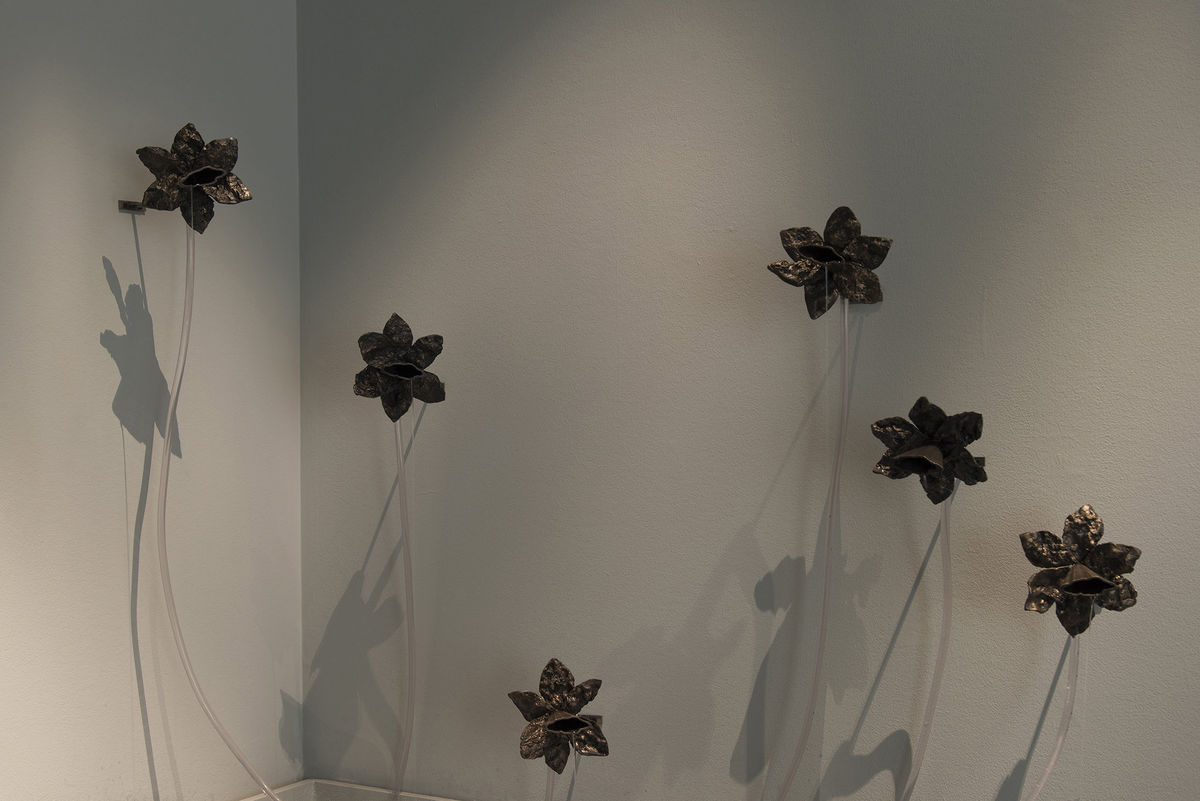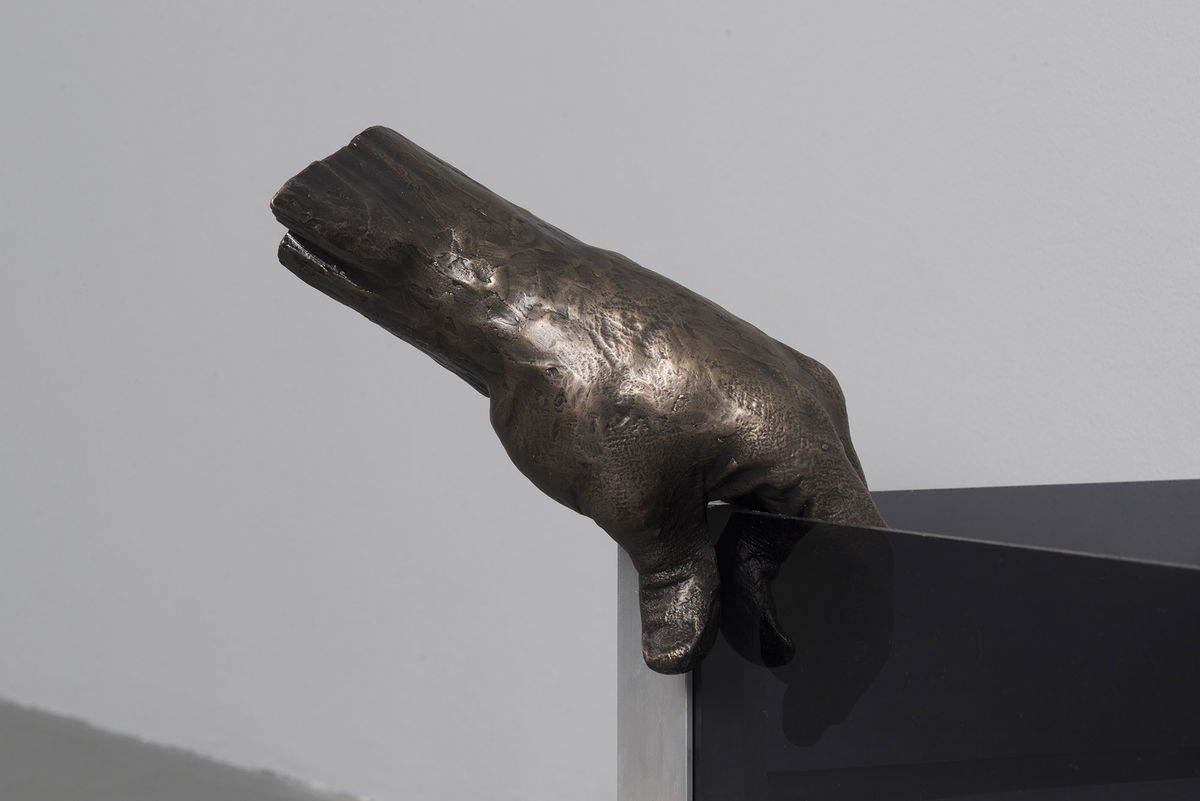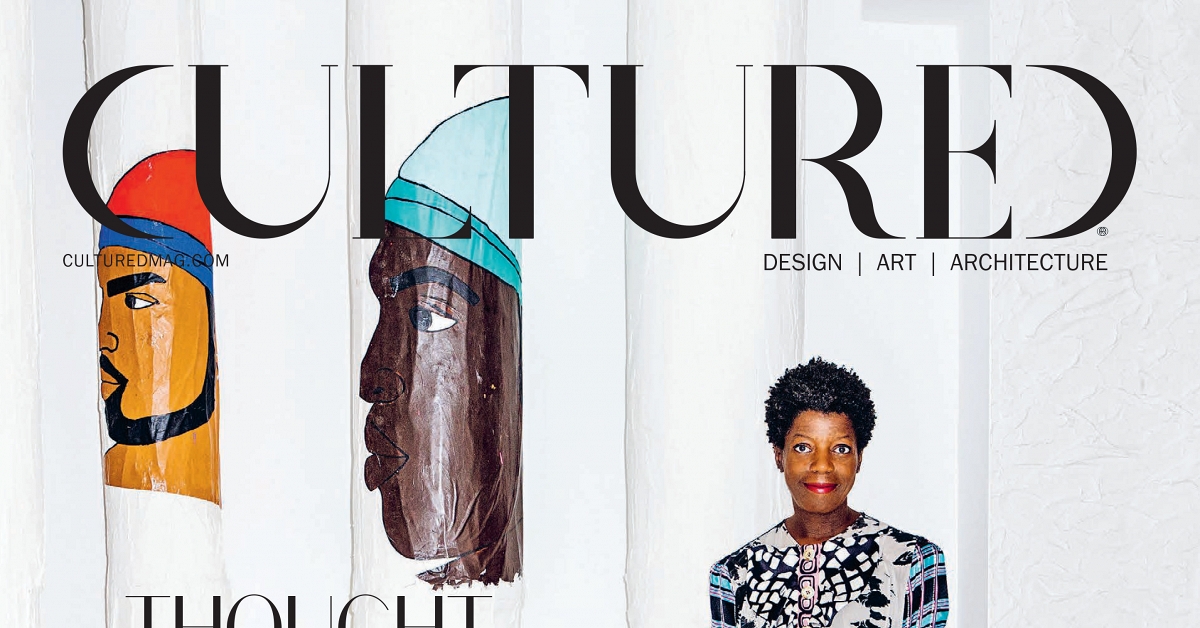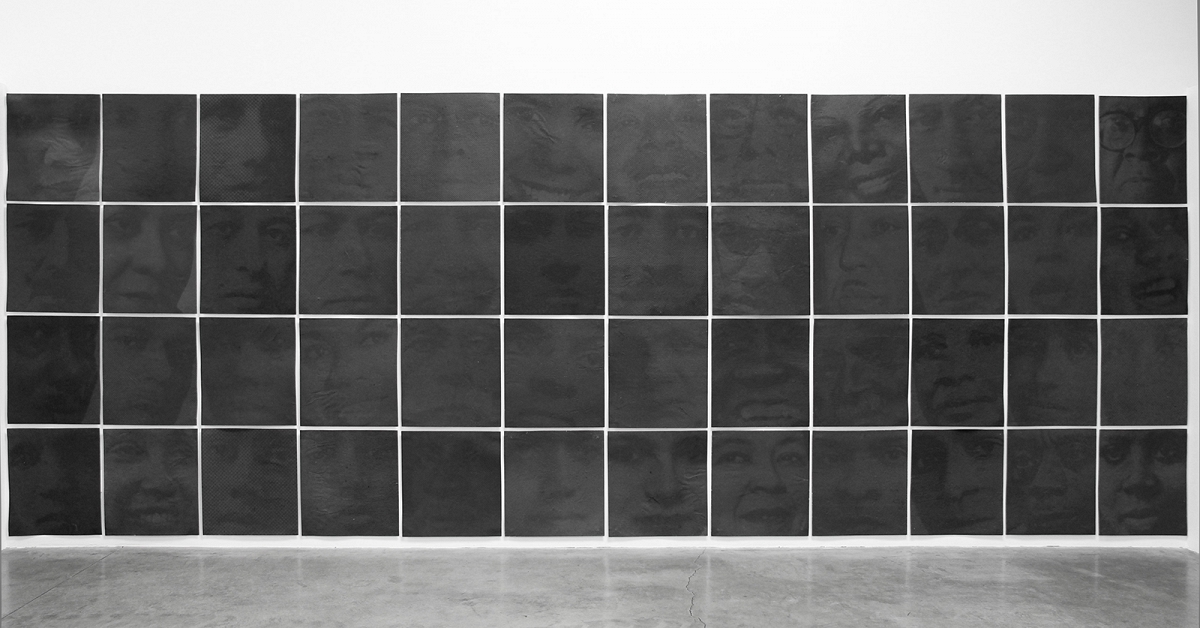Not Quite Platonic: murmur // Daniel G. Baird
THE SEEN / Apr 1, 2019 / by Gareth Kaye / Go to Original
The first things you notice are the sound of water and the conspicuous absence of light. The reciprocal senses of sight and sound heighten the effect of their respective other. A pool of water like an uneven horseshoe made of Plexiglas lines the walls in front of you. On the right are nine bronze daffodils, their corona sharp and bursting from the centers and clear sinuous hoses rise to meet them like unruly serpentine stems. On the left, appendages more familiar: a hand gripping the edge of the pool, and an ear, both in bronze—much like their floral counterparts. Save for the hand, each cast runs a slow drip or trickle of water from their centers, gently weeping into to the pool below. The aggregate sound of the water coming from the ten cast objects amounts to a score that gently fills PATRON Gallery with the exhibition’s eponymous onomatopoeia: murmur.
With an uncompromising fidelity that teeters between encyclopedic and libidinal, Daniel G. Baird has spent over two years producing fragmented one-to-one replicas of a cave’s walls in Iowa. After finally recreating the entirety of its inside1 through groups of sculptures mounted behind semi-transparent screens, hung by wire, or supported by tripods set to match the height of the wall sample, the artist-cum-spelunker had become tasked with navigating his exit from the cave and asking himself “What now?”
For those familiar with Baird’s past work, this exhibition signals something of a departure (at least a visual one at first.) Gone are the pristine steel and 3D-printed armatures and supports, as are the silicone and plaster molds of hands and cave walls. In their stead are small, expertly cast bronze works that have exited the museological vitrines and display apparatus Baird normally employs in favor of a shift towards the intimate and uncertain. Where Baird’s prior sculptures and supports traded in the appearance and authority of archeological or institutional inquiry, the flowers and appendages of murmur signal something of a private and reflexive curiosity that has always been present in the work but seems to be emerging more clearly with Baird’s own ascent to the surface.

The subject of the cave, of course, is potent with meaning to the point of burden, it is where humanity’s earliest artistic endeavors occurred at Lascaux and, and perhaps our first encounter with optical phenomena.2 Most pointedly in this case though is Plato’s allegory of the cave. Being one of the rudiments of Western philosophical thought, it is almost impossible to not look at Baird’s prior work as a continuation of where the allegory ends—with the responsibility of the intellectually liberated to return to the cave, emancipating those still trapped below through the pursuit and presentation of knowledge. While a Platonic view of the work may lend itself on a literal and metaphorical level to Baird’s time in and out of the cave, it seems to lead itself to only one logical conclusion that Baird leaves the depiction of the cave behind, but in murmur the cave is still present and beckoning at the opening of every sculpture. To read Baird’s depiction of the cave as means of expressing some kind of archaeological or hidden knowledge articulated in an alternative framework is tempting, but ultimately tends to lump the work into the “Blah-blah-blah-something-about-the-Anthropocene” category, missing the work’s poetic curiosity in favor of a more teleological way of seeing.
While the Platonic thinking may not be the best way to frame Baird’s work, least of all murmur, the ancient Greeks are not entirely unhelpful in proving a platform from which to couch an exploration of Baird’s practice, particularly through the story of Echo and Narcissus. The recurring actor in murmur is the Daffodil flower otherwise known by its scientific name: Narcissus. The myth’s conceit about tragic vanity is well-known, and at the end where Narcissus has killed himself, a flower sprouts near water in his place, but unable to see itself. This flower of course, is a daffodil.
murmur is by no means a retelling or interpretation of a myth, but much like its mythic counterpart, an obsession with origination is permeable. Baird marks the entrance of the Narcissus into his work as a consequence of process: “Earlier this year I decided to produce my own void within by digging into the replicated walls. This exploration resulted in a tactile and gestural marking that gave the piece the appearance of an exaggerated Daffodil corona.”3 Baird’s process of excavation is a doubled one. First is the actual act of spelunking into the cave, making the casts and bringing their disembodied pieces to the surface. Second, is the excavation into the bronze casts that the artist used to recreate the void leading into the cave, giving way to the Daffodil’s corona. Sight is once again forgone in favor of touch, in favor of feeling one’s way through the dark through the limited light in the gallery space. Much like the creation of humanity’s earliest artistic endeavors, sight is predicated on tactility, the act of using one’s hands to make an image, utilizing the built-in technology of human physiology to represent something beyond the maker.
If it is the emergence from Plato’s cave that makes the subject and subjectivity inherently alienating, then the ground has been set for Narcissus, the subject par excellence, to exist. As Truman Capote once wrote “I tell you, my dear, Narcissus was no egoist… he was merely another of us who, in our unshatterable isolation, recognized, on seeing his reflection, the one beautiful comrade, the only inseparable love… poor Narcissus, possibly the only human who was ever honest on this point.”4 Narcissus’s individuated subjectivity and self-obsession lay the ground for his demise, and ultimately he is supplanted by a being that is incapable of the vision that lead to its predecessor’s undoing.

Needless to say, daffodils cannot see as humans do, but they can “hear.” Recent studies have found that the roots of plants can detect vibrations from water and even differentiate between recordings and the real thing, even plants can determine an image of something without necessarily being able to see. Daffodils grow together, and in this exhibition they are all grouped together like a chorus against the same wall. In early human and prehistoric communities, the group was the only way to survive. Codependency between bodies and senses are necessary in order not only to survive, but also to exist as an actor. Much like a daffodil that “hears” through touch (vibrations), humans in the dark of a cave “see” through touch and sound.
If murmur suggests an ontology it is neither prehistoric nor Platonic, but rather firmly in the area of the post-human; about the bodies and their own nature as media dependent on interacting with other agents in the world. Installed on one end of the room, the casts of the hand hand and ear are the two archetypal gateways through which humans receive touch and sound, while across the way are the chorus of daffodils whose dripping corona build the soft song that installation plays. While the cast of the ear only lets loose slow fragile drips of water, the daffodils weep a steady stream of it. A murmur has no author, but rather is composed complimentary sounds whose origin is indefinite much like the origin Baird seeks. While the artist has exited the cave he steadfastly remains at its threshold, looking inwards instead of out from its depths. This opening, whose shape is the aperture in each sculpture where water escapes, still pours forth some kind of meaning, but it is too low for us to hear, only a trickle of water that our ears can register, only a murmur.
1 “…When I replicated the interior of the cave in full, I needed to make a decision about what separated this static space from the rest of the world.” Daniel Baird, murmur press release, PATRON Gallery
2 Gatton, Matt. “Archeo-Optics.” Paleo-camera. Accessed February 15, 2019. http://paleo-camera.com/archeo-optics/.
3 Daniel Baird, murmur press release, PATRON Gallery
4 Truman Capote, Other People, Other Rooms, (New York: Signet, 1948) p. 144
With an uncompromising fidelity that teeters between encyclopedic and libidinal, Daniel G. Baird has spent over two years producing fragmented one-to-one replicas of a cave’s walls in Iowa. After finally recreating the entirety of its inside1 through groups of sculptures mounted behind semi-transparent screens, hung by wire, or supported by tripods set to match the height of the wall sample, the artist-cum-spelunker had become tasked with navigating his exit from the cave and asking himself “What now?”
For those familiar with Baird’s past work, this exhibition signals something of a departure (at least a visual one at first.) Gone are the pristine steel and 3D-printed armatures and supports, as are the silicone and plaster molds of hands and cave walls. In their stead are small, expertly cast bronze works that have exited the museological vitrines and display apparatus Baird normally employs in favor of a shift towards the intimate and uncertain. Where Baird’s prior sculptures and supports traded in the appearance and authority of archeological or institutional inquiry, the flowers and appendages of murmur signal something of a private and reflexive curiosity that has always been present in the work but seems to be emerging more clearly with Baird’s own ascent to the surface.

The subject of the cave, of course, is potent with meaning to the point of burden, it is where humanity’s earliest artistic endeavors occurred at Lascaux and, and perhaps our first encounter with optical phenomena.2 Most pointedly in this case though is Plato’s allegory of the cave. Being one of the rudiments of Western philosophical thought, it is almost impossible to not look at Baird’s prior work as a continuation of where the allegory ends—with the responsibility of the intellectually liberated to return to the cave, emancipating those still trapped below through the pursuit and presentation of knowledge. While a Platonic view of the work may lend itself on a literal and metaphorical level to Baird’s time in and out of the cave, it seems to lead itself to only one logical conclusion that Baird leaves the depiction of the cave behind, but in murmur the cave is still present and beckoning at the opening of every sculpture. To read Baird’s depiction of the cave as means of expressing some kind of archaeological or hidden knowledge articulated in an alternative framework is tempting, but ultimately tends to lump the work into the “Blah-blah-blah-something-about-the-Anthropocene” category, missing the work’s poetic curiosity in favor of a more teleological way of seeing.
While the Platonic thinking may not be the best way to frame Baird’s work, least of all murmur, the ancient Greeks are not entirely unhelpful in proving a platform from which to couch an exploration of Baird’s practice, particularly through the story of Echo and Narcissus. The recurring actor in murmur is the Daffodil flower otherwise known by its scientific name: Narcissus. The myth’s conceit about tragic vanity is well-known, and at the end where Narcissus has killed himself, a flower sprouts near water in his place, but unable to see itself. This flower of course, is a daffodil.
murmur is by no means a retelling or interpretation of a myth, but much like its mythic counterpart, an obsession with origination is permeable. Baird marks the entrance of the Narcissus into his work as a consequence of process: “Earlier this year I decided to produce my own void within by digging into the replicated walls. This exploration resulted in a tactile and gestural marking that gave the piece the appearance of an exaggerated Daffodil corona.”3 Baird’s process of excavation is a doubled one. First is the actual act of spelunking into the cave, making the casts and bringing their disembodied pieces to the surface. Second, is the excavation into the bronze casts that the artist used to recreate the void leading into the cave, giving way to the Daffodil’s corona. Sight is once again forgone in favor of touch, in favor of feeling one’s way through the dark through the limited light in the gallery space. Much like the creation of humanity’s earliest artistic endeavors, sight is predicated on tactility, the act of using one’s hands to make an image, utilizing the built-in technology of human physiology to represent something beyond the maker.
If it is the emergence from Plato’s cave that makes the subject and subjectivity inherently alienating, then the ground has been set for Narcissus, the subject par excellence, to exist. As Truman Capote once wrote “I tell you, my dear, Narcissus was no egoist… he was merely another of us who, in our unshatterable isolation, recognized, on seeing his reflection, the one beautiful comrade, the only inseparable love… poor Narcissus, possibly the only human who was ever honest on this point.”4 Narcissus’s individuated subjectivity and self-obsession lay the ground for his demise, and ultimately he is supplanted by a being that is incapable of the vision that lead to its predecessor’s undoing.

Needless to say, daffodils cannot see as humans do, but they can “hear.” Recent studies have found that the roots of plants can detect vibrations from water and even differentiate between recordings and the real thing, even plants can determine an image of something without necessarily being able to see. Daffodils grow together, and in this exhibition they are all grouped together like a chorus against the same wall. In early human and prehistoric communities, the group was the only way to survive. Codependency between bodies and senses are necessary in order not only to survive, but also to exist as an actor. Much like a daffodil that “hears” through touch (vibrations), humans in the dark of a cave “see” through touch and sound.
If murmur suggests an ontology it is neither prehistoric nor Platonic, but rather firmly in the area of the post-human; about the bodies and their own nature as media dependent on interacting with other agents in the world. Installed on one end of the room, the casts of the hand hand and ear are the two archetypal gateways through which humans receive touch and sound, while across the way are the chorus of daffodils whose dripping corona build the soft song that installation plays. While the cast of the ear only lets loose slow fragile drips of water, the daffodils weep a steady stream of it. A murmur has no author, but rather is composed complimentary sounds whose origin is indefinite much like the origin Baird seeks. While the artist has exited the cave he steadfastly remains at its threshold, looking inwards instead of out from its depths. This opening, whose shape is the aperture in each sculpture where water escapes, still pours forth some kind of meaning, but it is too low for us to hear, only a trickle of water that our ears can register, only a murmur.
1 “…When I replicated the interior of the cave in full, I needed to make a decision about what separated this static space from the rest of the world.” Daniel Baird, murmur press release, PATRON Gallery
2 Gatton, Matt. “Archeo-Optics.” Paleo-camera. Accessed February 15, 2019. http://paleo-camera.com/archeo-optics/.
3 Daniel Baird, murmur press release, PATRON Gallery
4 Truman Capote, Other People, Other Rooms, (New York: Signet, 1948) p. 144






